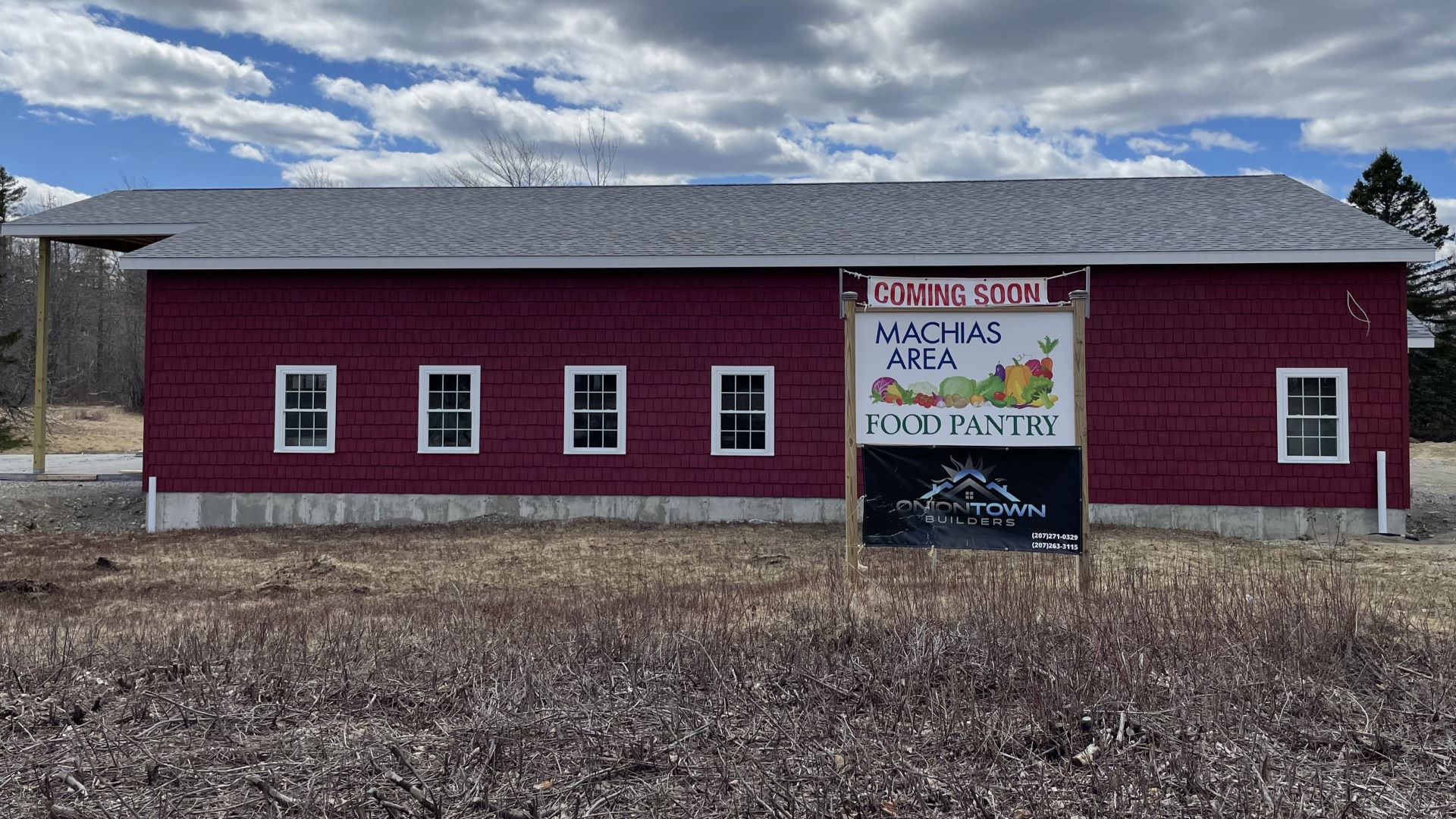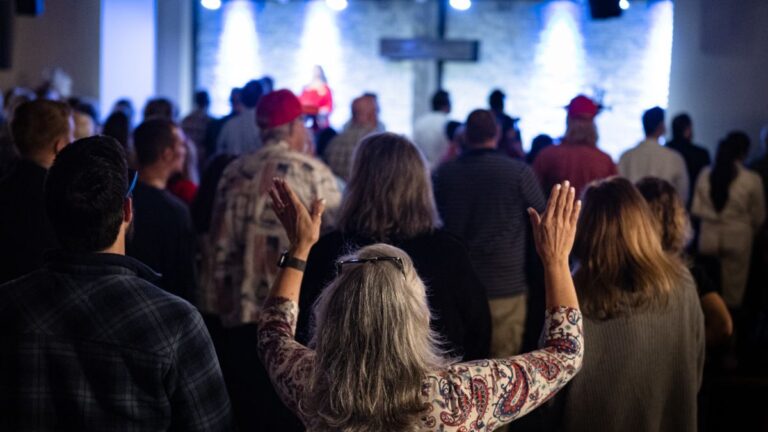Wednesday was a mild, windy day in Downeast Maine, the kind of weather Mainers wait for all winter so they can finally get outside. With plenty of work to do in her gardens, Lissa Robinson wanted to be out there, too. But because of an excruciating neurological disorder that is triggered by wind, the 47-year-old disabled wife and mother of five had to wait for a calmer day to tend her vegetables.
With her husband also on disability for a heart condition and the family’s Supplemental Nutrition Assistance Program (SNAP) benefits slashed in March from $1,400 to $204 a month, waiting for the wind to die down could mean less food on the table. Her garden is crucial to her family’s food budget.
“If it wasn’t for the gardens, we can and dehydrate too, and raising chickens, we wouldn’t be able to afford to feed ourselves,” said the Harvard-educated Robinson.
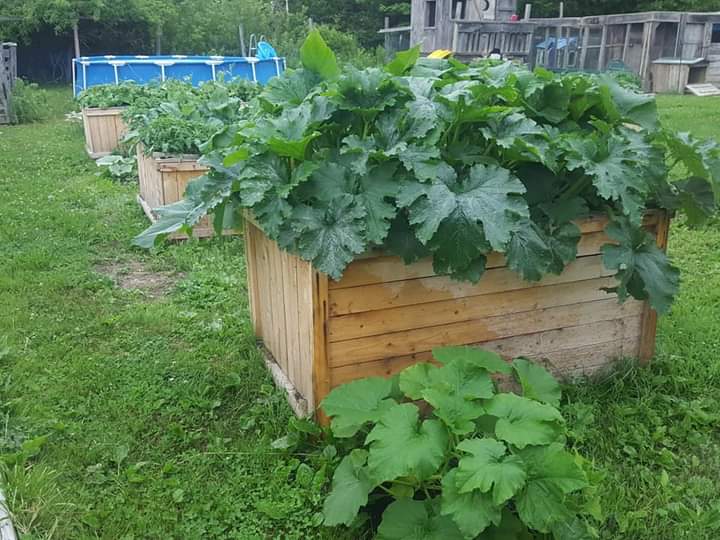
The extra SNAP benefits were funded by Congress in response to the pandemic in 2020. But a recent federal law brought those emergency benefits — an extra $19.2 million a month statewide — to an abrupt end in March. Washington County, the poorest in Maine with a nearly 19 percent poverty rate, lost over three-quarters of a million dollars last month, leaving 6,554 adults and children, families like the Robinsons, with hundreds of dollars less every month to buy food.
As a result, the managers of the county’s 10 food pantries say they’ve been swamped, most reporting that their clients doubled in just one month. Throughout the county, the demand has pantries scrambling to keep shelves and freezers filled.
“One day I get this slightly, you know, urgent phone call from one of the pantry managers saying, ‘Yeah, I’m desperate. My numbers are doubled. And I have an empty freezer and I cannot get food. I just need more food and I just don’t have any place to get it. Can you help?” said Regina Grabrovac, Healthy Acadia’s food program manager and gleaning coordinator for the county. “So it jumps me into gear and I’m basically making phone calls all day.”
During a rare lull one day this week, Megan Smith, the Maine Seacoast Mission Family Food Center food security program coordinator, and Administrative Associate Maria Wight eagerly restocked shelves with a fresh delivery from the Good Shepherd Food Bank, a statewide nonprofit agency that distributes surplus and purchased food at steeply discounted prices to more than 400 nonprofit hunger relief organizations throughout Maine.
The delivery came just in time. Monday’s shipment of donated canned goods and bakery products from Walmart and Shaw’s was scooped up by patrons in just one day. Smith isn’t surprised by the demand.
“Our area has a lot of senior citizens and most of those who I’ve spoken to say their SNAP benefits went from $120 to $23,” Smith said. “So they’re now choosing, as they stated to me, between their bills and their food.”
For seniors and others who barely qualified for SNAP benefits before the pandemic, losing the emergency benefits meant being left again with almost nothing — or nothing at all.
In January, an 8.7 percent cost-of-living adjustment for Social Security recipients kicked in, raising their monthly payment enough in many cases to knock them out of eligibility for SNAP benefits, according to Amanda Marino, the advocacy and leadership program manager for the Food Bank.
“This benefit cliff is exactly that. There was no off ramp, really. There was this increase that really was starting to impact people, making them feel more food secure than they ever have, and then — it just ended,” Marino said.
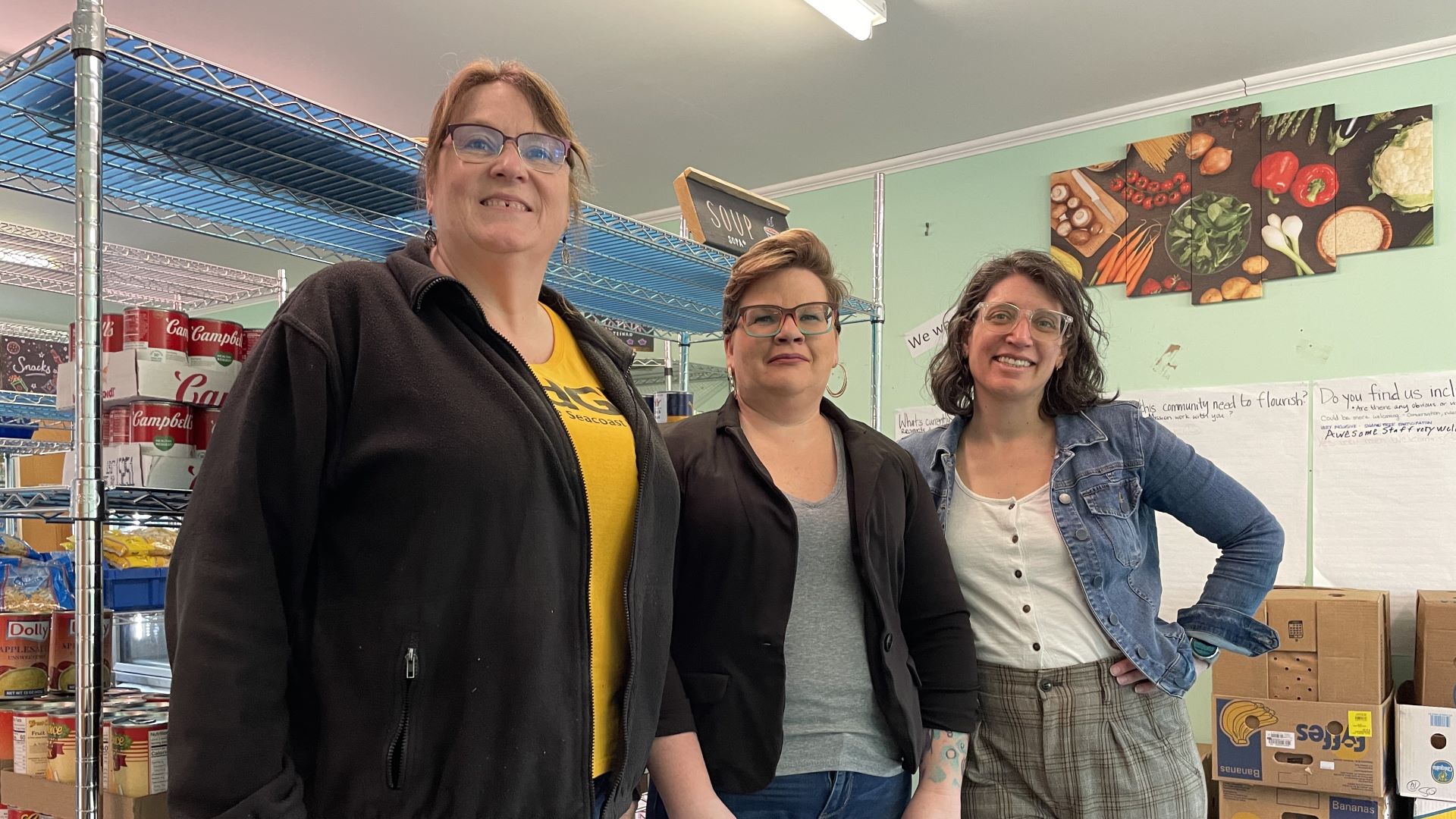
Another hit came when income guidelines were raised this year for The Emergency Food Assistance Program, another federal program administered by states that provides some additional free food assistance. Although adding to the muddle, there is one bright spot. Maine opted to boost the benefits eligibility from 185 percent to 200 percent of the poverty rate. But the move was hardly noticed amid the onslaught of grim news, especially for the most vulnerable.
The unintended consequences of the reformulations, coupled with skyrocketing food prices, utility bills and fuel prices created a perfect storm, making it a very stressful time for the young and old alike who rely on SNAP benefits to help make ends meet. Without the extra emergency food assistance, Maine’s 600 food pantries are the only safety net.
“God bless pantries like the Seacoast Mission,” said Robinson. “They’re literally keeping a lot of Downeast Mainers from starving. But even their pantries are essentially bare right now.”
Since moving to Maine with her three children a few years ago, Brandy Evanson has struggled to secure a life for her family, working in retail until an accident caused her to go on unemployment and apply for SNAP benefits. During the pandemic, $900 of emergency food assistance meant she rarely had to visit food pantries. Now, with her benefits slashed to $120 a month, Evanson said she has to go often.
“I try not to go every week unless I really need to, because that way, you know, it’s there for everybody,” Evanson said.
Advocates predict the staggering loss of emergency SNAP benefits in all 16 counties will exacerbate an already dire food insecurity outlook. Statewide, 139,410, or 10 percent of the state’s 1,385,340 people, are food insecure, according to Feeding America’s 2020 annual Map the Meal Gap study, the most recent report available from the hunger-relief organization. At roughly 15 percent, Piscataquis, Somerset and Washington counties are the most food insecure in the state.
Recognizing the link between food insecurity, and adverse health and economic outcomes, Healthy Acadia, a nonprofit that works on an array of community health initiatives in Washington and Hancock counties, launched the Downeast Gleaning Initiative in 2013. Working with community volunteers and students, the program harvests and collects thousands of pounds of excess food from farms, gardens and stores, and redistributes it to more than 30 food security programs throughout Hancock and Washington counties.
Gleaning and distributing food in Washington County, with about 2,600 square land miles, can be a challenge, said Grabrovac, the Food Program manager and Gleaning coordinator for the county.
“We have this huge geography, so it’s a long way from one pantry to another,” Grabrovac said. “When I bring down a load of food from Aroostook County, it’s an all-day proposition for me starting at 5 in the morning. But I’m absolutely willing to because that’s the low-hanging fruit.”
After driving to Aroostook County to pick up vanloads of vegetables, meat or milk from pantries willing to share their surplus — more abundant in the heavily farmed Aroostook communities — Grabrovac identifies the pantries in Washington County that are most in need and best able to accommodate food that must be frozen or handed out before the expiration dates. Stores like Hannaford, Shaw’s and Walmart donate the food they’ve removed from their shelves and freezers that is close to expiration.
Grabrovac said it’s a patchwork system, where she and the pantries have to be nimble to make sure nothing goes to waste. She holds regular network meetings, bringing pantry managers together to work on solutions and best practices. Grabrovac said their next meeting in May will be doubly important now that demand is at its peak and resources are stretched thin among all pantries — in Cherryfield, Danforth and other communities.
At the Danforth Food Pantry, largely supported with town funding, Manager Marilyn Stoddard does her part making sure nothing is wasted and people don’t go hungry. She personally calls each of the 132 families the pantry serves to find out what they do or don’t need.
With her elderly clients, Stoddard spends extra time chatting with them to make sure they’re healthy and safe, or if they need anything like a ride to the doctor. Stoddard and her volunteers also make deliveries to about 42 households between Danforth, Brookton and Forest City. And when the Good Shepherd Food Bank sends a “push alert” saying it has a semi-truck load of milk, Stoddard jumps on it.
“If they have 46 cases of milk, I tell them, you bet! I’ll meet them in Lincoln to pick it up and then I hand them out to anybody who wants it — boom, boom, boom!” said the passionate 60-year-old.
At the Eastport Labor of Love, pantry manager Lindy McClellan gets a helping hand from the Coast Guard with unloading trucks when donations and Food Bank purchases come in to feed the pantry’s 95 families, seven more added in March. She expects those numbers will keep growing.
Calais has two pantries. The Irene Chadbourne Ecumenical Food Pantry, an income-based, nonprofit 501c(3) provides emergency food to people in the area. The pantry had already expanded to three days due to a surge in demand caused by the closure of smaller pantries in neighboring towns, and is adding Saturday hours to meet the soaring need. Steve Farrar, the pantry director, said last Friday was its busiest ever. Thirty-five families were served in a two-hour span, double the normal number at that time.
At Washington Community College, Farrar’s wife Bernadette runs Calais’ other pantry. As a student navigator, part of her job is working with students who operate The Caring Cupboard, a food pantry for students in need. According to Farrar, that need is up two-thirds over last year, doubling her budget. Supported with institutional and Maine Community College Foundation funding, Farrar said the student pantry is a crucial piece of their educational mission.
“You cannot learn if you are hungry,” Farrar said. “And many of our students are non-traditional students with families. You’re not going to have the bandwidth to learn if you’re worrying about feeding your family.”
Down the road in Pleasant Point, the Passamaquoddy Food Pantry also helps families feed children, including the Passamaquoddy community’s foster families. Carrie Cropley, the director of Indian Township child and family services, said she’s had to request food cards for more than 30 families with whom she’s working.
“I have foster parents that I’ve placed foster children with, and they’re definitely struggling. And some biological parents that we’re working with are also struggling,” Cropley said.
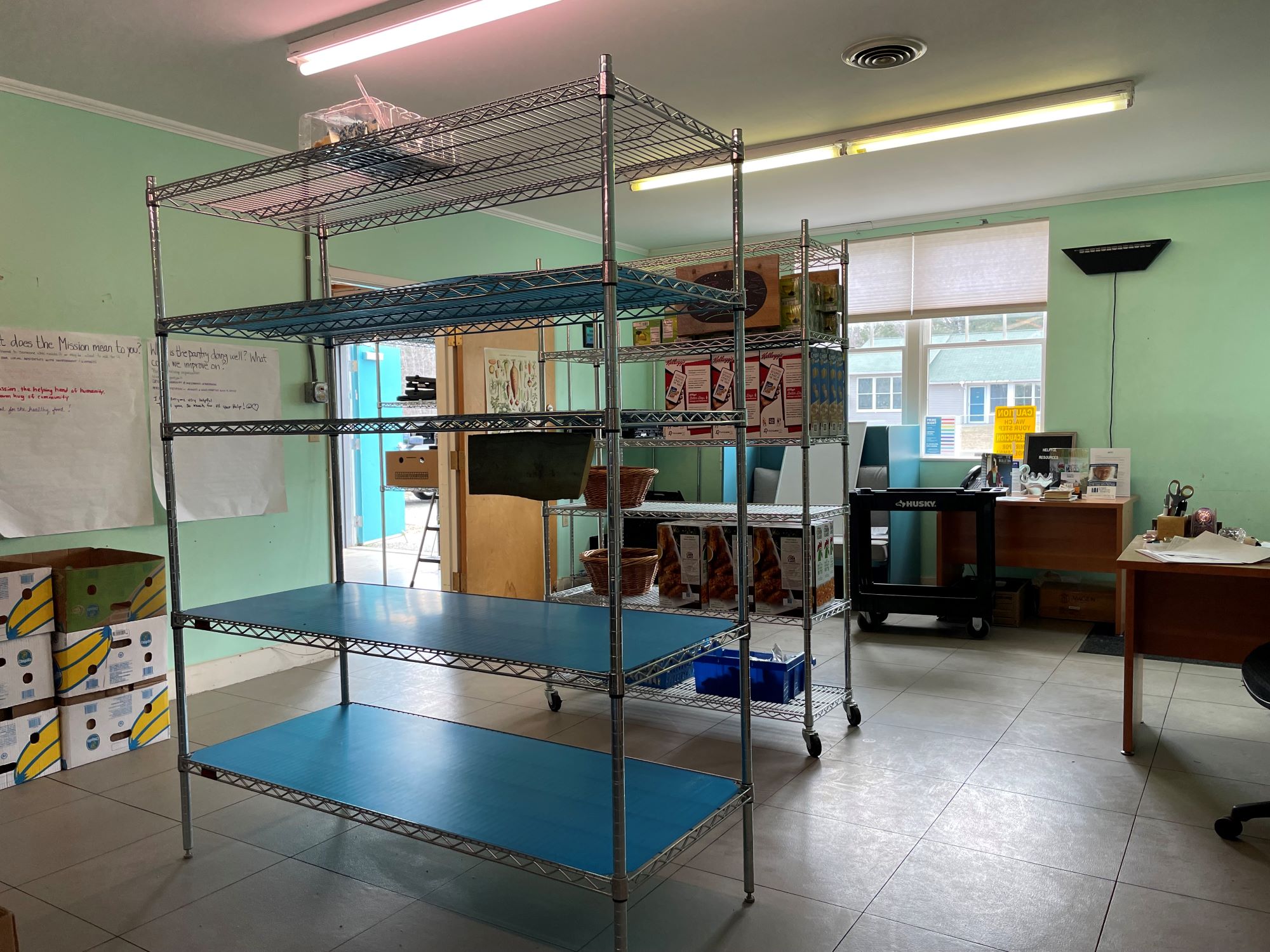
Still, while most Washington County pantries are frantically looking for more resources to fill shelves, others, like those in Machias and Lubec, are expanding their pantries and programming to provide spaces, like the Mission’s store-model pantry, places that normalize the pantry experience and help erase stigmas.
The Lubec Community Outreach Center, which houses a food pantry, is open daily. Although hours for the pantry are more limited, every third Wednesday and Saturday, the center offers residents of all ages a place to socialize every day, shop at the thrift store, attend events, workshops and after-school programs.
Since the 1980’s, the Machias Area Food Pantry has operated from the vestry of Centre Street Church, run by church and community volunteers. But in May, the pantry will move to its new 2,400 square-foot home on Kennebec Road, where it will set up store-like shelving so clients can come in and “shop” if they choose.
There also will be space for meetings, and future cooking classes and events. The $500,000 building was funded mostly with a $150,000 grant from the Food Bank, and a $300,000 anonymous donation. But the pantry’s co-director, Ken Warner, said the small donations are just as important and what keep the pantry going.
“One man donates every month and one month he missed it. So the next month he sends me his normal check, and writes another check with added interest because he was late,” Warner said.
Even with such generosity, the Feeding America study found that $2.8 million would be needed to completely eliminate food insecurity in Washington County. That’s an unlikely step given a political climate where some call for cuts or changes to food programs that would add work requirements or further restrictions on how SNAP benefits can be spent.
The Food Bank is urging people to gro.b1763472021fsg@y1763472021cacov1763472021da1763472021" target="_blank" rel="noopener">contact legislators, asking them to support funding food programs. At the Seacoast Mission, Downeast Director Jenny Jones said despite program cuts, stretched resources, and threats to programming, the Mission tries to mitigate the harm by reassuring clients and treating them with dignity.
“We really want to try to message that we’re here for them when they need us, to reduce that scarcity mentality that people generally in trauma have in their brain when they’re coming to pantries,” Jones said. “We’re taking actions to try to meet some of those needs even if we can’t necessarily always meet it with product.”
Note: This story has been updated to clarify Maria Wight’s title.
Sign up here to receive The Maine Monitor’s free newsletter, Downeast Monitor, that focuses on Washington County news.


